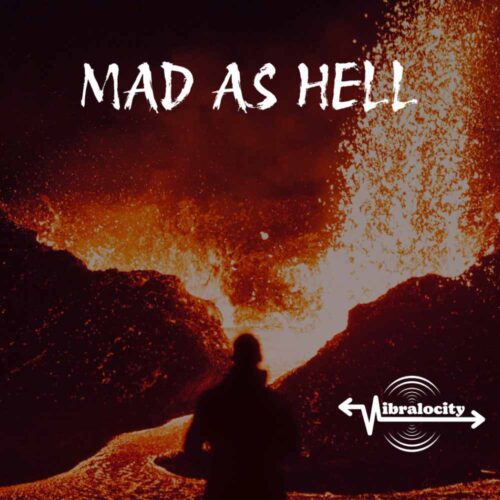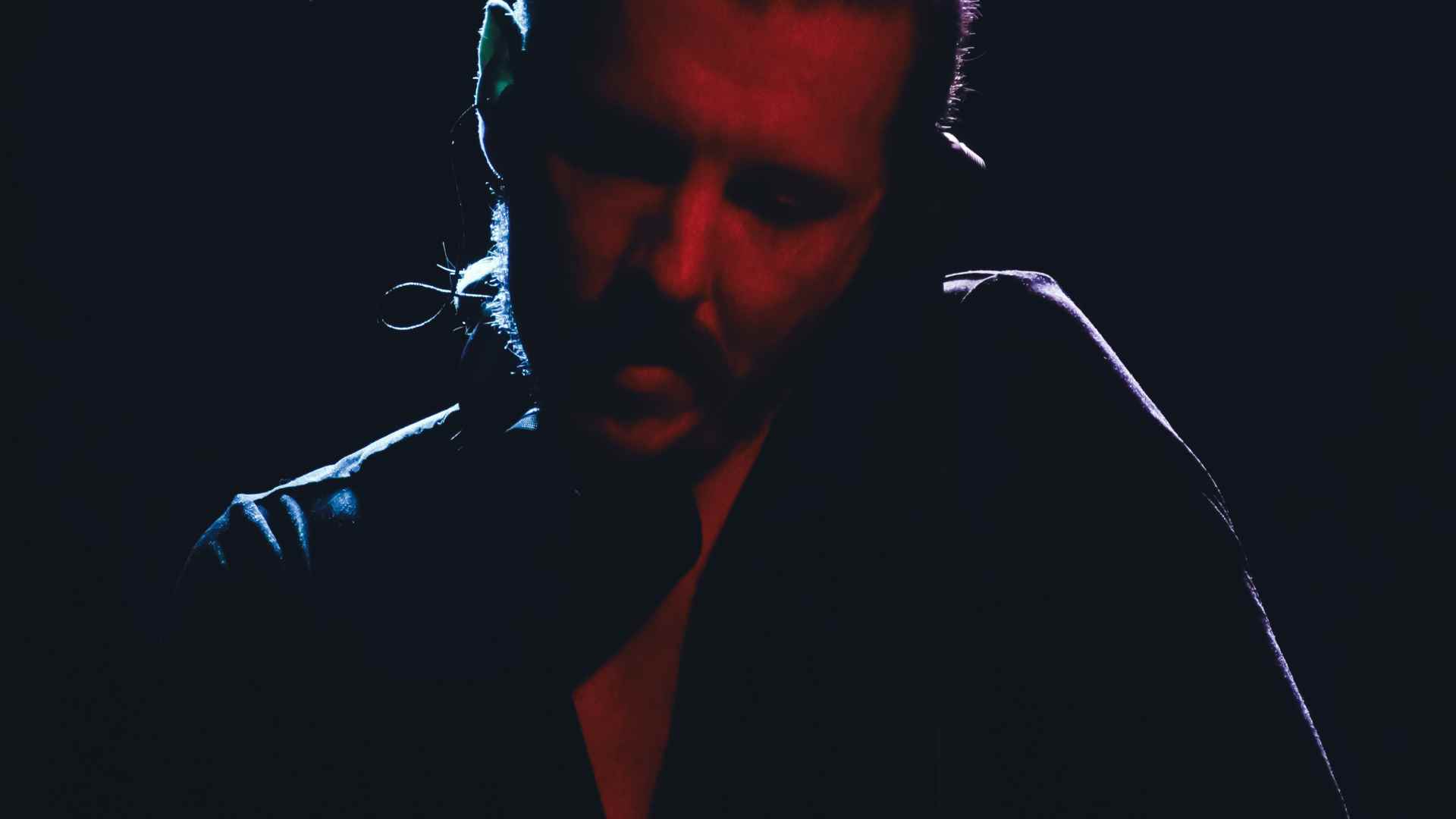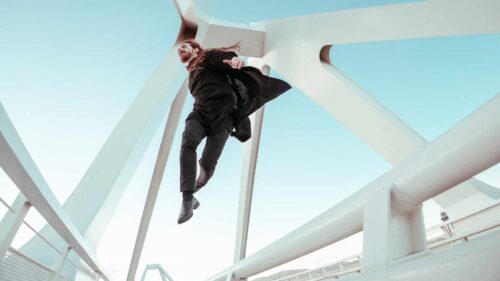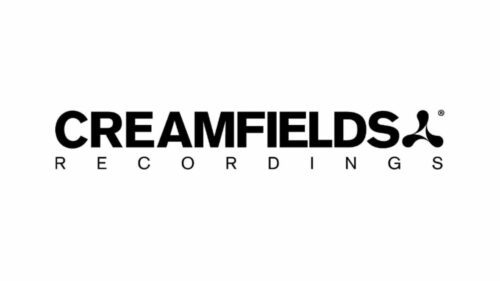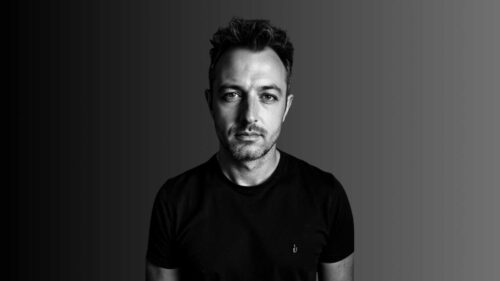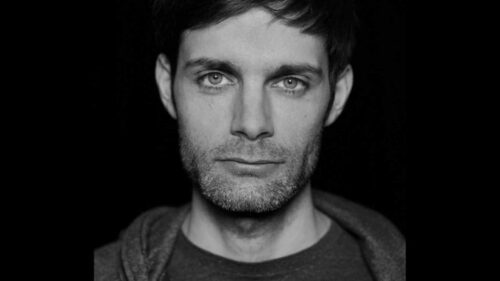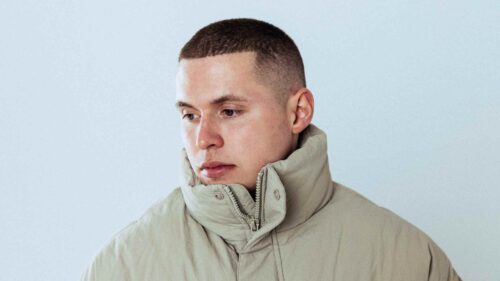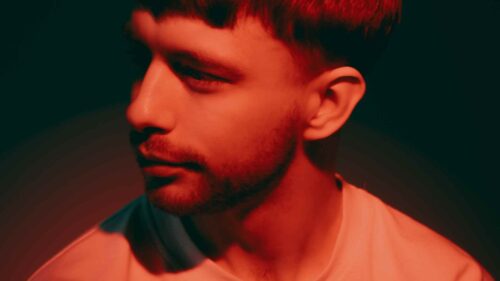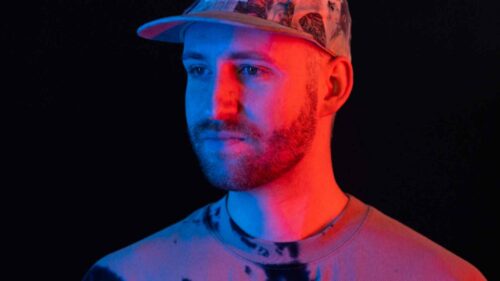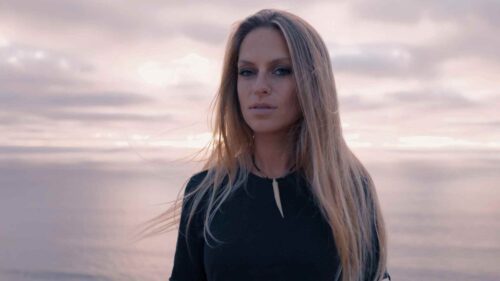Vibralocity isn’t just a name, it’s a force of motion and feeling. The DJ/producer project of Joshua Jacobs, formerly known as SinSay, Vibralocity channels rhythm, emotion, and storytelling into every beat.
With a sound that fuses drum and bass, UKG, funk, hip hop, and bass-heavy textures, his performances become sonic journeys that move both body and soul. His release, “MAD AS HELL,” flips a classic film moment from The Network into a fierce call for emotional release and self-awareness. We sat down with Vibralocity to talk about transformation, authenticity, and finding creative power in raw emotion.
1. Let’s start with the name. “Vibralocity” is such a unique fusion of “vibration” and “velocity.” What does that concept mean to you personally, and how does it shape the energy of your music?
Vibralocity is the result of hours and hours of searching for the best possible artist name… only to find that all the good ones had been taken! I decided I had to create my own word to reflect who I am as an artist, so I combined vibration and velocity as a kind of play on ‘speed of sound.’ To me, vibration is the way we relate to music- we are allowing the sound waves to move through and around us. Higher frequency (faster) sound waves make our ear drums vibrate, which is how we hear music, and the lower frequencies (which have a slower speed) vibrate the rest of our body, giving us the sensation of bass. The name shapes the energy of my music by reminding me that the full frequency spectrum of sound is my playground- which means that I’m not only writing music people will hear, but also creating vibrations that people will literally feel in their body.
2. Your track, “MAD AS HELL,” uses an iconic scene from the movie “The Network”. What inspired you to build a song around that moment, and what message are you hoping listeners take away from it?
So that scene has been part of our online meme culture for years- because it still rings true nearly 50 years after it was released. For readers who haven’t seen it- a newscaster is fed up with the state of the world (poison in our food, rising crime, social alienation) and goes on a tirade where he is telling viewers to “get mad” so we can start changing things. He doesn’t give any specific instructions, just that we need to start yelling out the window. Not only is that scene iconic, it tells us a story about radical change in society. The very first step of any revolutionary movement is for people to get mad about things and start addressing the problems we see. This allows us to come together in our common struggles and desires and build a better future. That’s what inspires me so much about the scene, and truly what I tried to impart to the listener in the song.
One cool thing I wanted to mention is that I didn’t time stretch the vocals at all- I tapped out the tempo of the song to his cadence while speaking, and it was almost all the same speed! It made it easier for me to play with the vocals.
3. Anger is a powerful emotion, and your track explores channeling it constructively. How do you personally transform emotions like anger or frustration into creative fuel?
For me, it’s all about identifying that I’m feeling a heavy emotion like anger and then realizing I have tools available to me which allow me to use it as fuel. I try to remove all thought from this process, so I just start writing a beat, a melody or a bassline in my DAW (Ableton). I don’t have a goal or a direction, I’m really just trying to harness that energy and bring it from deep inside out into the world through the medium of music. This process is like working with raw materials- the results are unexpected, but are always powerful. I love how after a session, not only do I feel lighter, but I can almost ‘see’ the emotions outside of myself in the form of music; it’s truly a catharsis. This expression of raw emotion is where some of my best music comes from as well.
4. Your musical influences range from drum and bass to classical to funk and hip hop. How do you balance such a wide spectrum of sounds when creating something that still feels distinctly “Vibralocity”?
What a great question. I’ve asked myself this sometimes- being inspired by such a diverse range of genres can be challenging in the sense of creating a distinct identity for my artistic project. What I’ve come to realize is that my goal with music is simply to be authentic- whatever I’m feeling in the moment is what comes out. I don’t try to sound like anyone else, and I don’t try to fit into any boxes. That freedom allows me to pick and choose elements from the various genres I appreciate and put them together in ways that are truly ‘me.’ The end result of that is a body of work that I am proud of, that shows my versatility as an artist, and is something that people can relate to.
I’m really inspired by artists like The Gaslamp Killer- he pulls from maybe even a broader range of musical influences than I do and is somehow able to cohesively blend them together into something that is 100% uniquely him. That boldness and creativity have shown me that I never have to limit myself to a certain range of genres; I can always follow my heart when I’m writing music.
5. You started as SinSay before evolving into Vibralocity. What did that transformation teach you about identity, growth, and cultural respect in the music scene?
I’m glad you asked about this. SinSay was a name bestowed upon me back in 2013 when I was still finding my way as an artist. I used to DJ house parties, often wearing a kimono, and one day my friend came up and called me ‘sensei’ and it just stuck. I changed the spelling of the word (which means teacher in Japanese) so that I wasn’t just claiming that I was a teacher, especially when I was still new to DJing.
Over time, I grew my brand as SinSay and was well known in the Pacific Northwest. However, also during that time I was learning more about cultural competency and how to best show appreciation for cultures that aren’t mine, without appropriating those cultures. I had friends who were close to me that helped me in my journey of understanding, and through their guidance I was able to see that SinSay wasn’t something that needed to continue as a project.
While that was a sad realization, it was also freeing, because it allowed me to shape my own identity as an artist- with a newfound respect and appreciation for other cultures. I’ve seen other artists go through this same kind of transformation, such as VEIL (who changed her name from Space Geisha). I would love to see more of that cultural awareness find its way into our music scene.
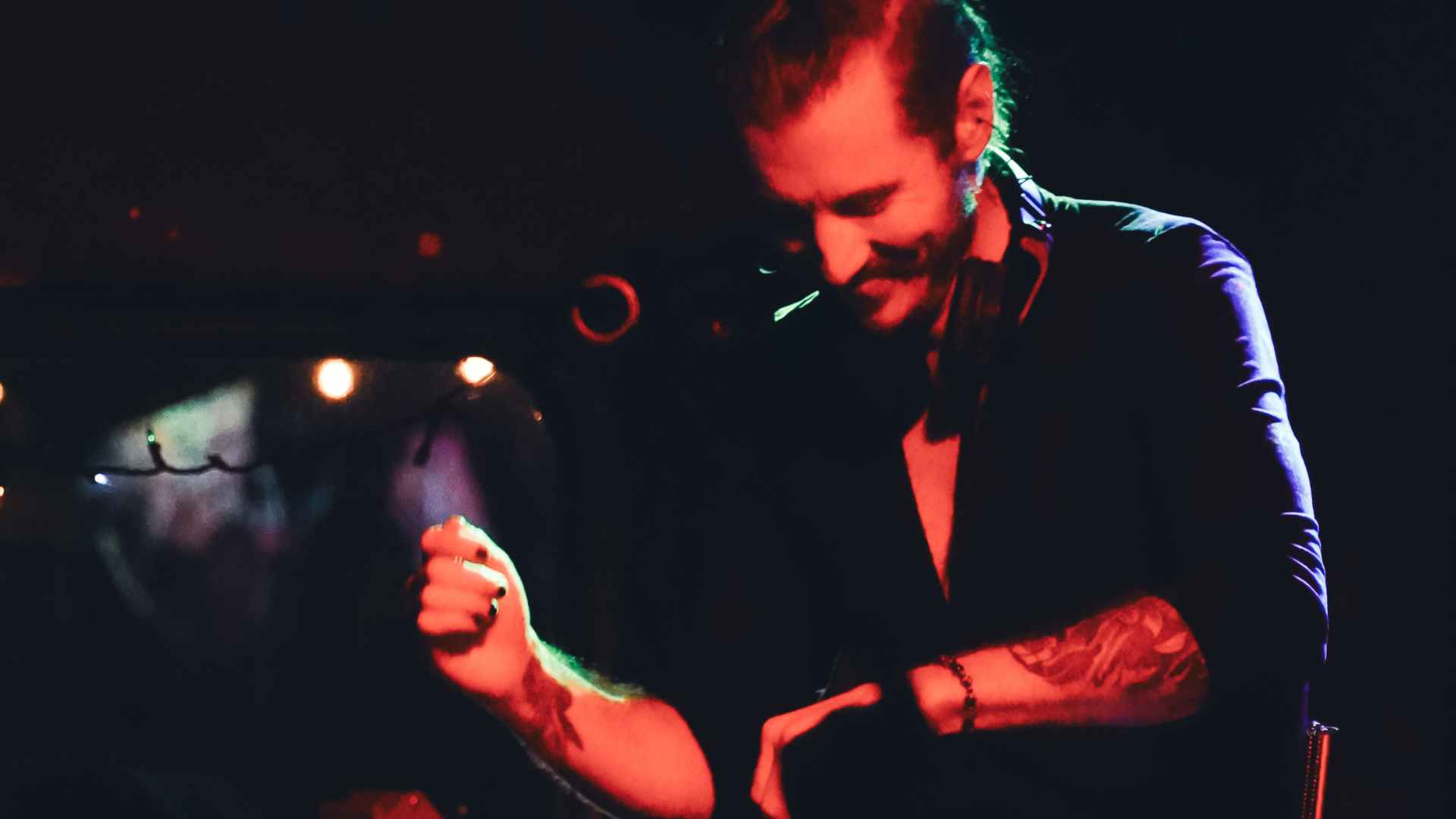
6. As a performer, you’ve shared stages with artists like Walker & Royce, Krewella, and Yheti. Has any particular performance or collaboration profoundly shaped your approach to live shows?
Oh gosh. I feel like every show shapes me in some way. If I had to think about the performances that most profoundly impacted me, I would have to mention Russ Liquid and Mark Brody. I bring up my performance with Russ Liquid because originally I was meant to only open the night, but the artist playing before Russ couldn’t make it, so I was asked to play a second set. I was fully prepared for the off-chance that would happen, but had a much more free-styled set than my opener. Not only was that really fun, but as Russ was getting set up, he started riffing on his keys while I was playing- so we had this dynamic and impromptu intro to his set that neither of us expected. The crowd loved it, and it also showed me how important it is to come prepared with extra tunes and an openness to explore new ideas on the fly.
The other performance I wanted to mention was actually pretty early in my DJ journey. I had just moved back to Central Oregon after being away for some 11 years or so. Bend was opening up a new night club called ‘The Capitol.’ I decided to go in on one of their first nights and see if I could talk to someone about getting booked there. Well, Mark Brody (a 30+ year DJ staple of the underground scene) just happened to be setting up for the night and he asked if I wanted to open up that night (which was in like 3 or 4 hours)! I said ‘of course’ and went home to get ready. When the night started, I had been playing tunes for about 30-40 minutes when Mark came up and asked me if I wanted to B2B. I again said ‘of course’ so he and I ended up collaborating for about an hour and a half of music, which we had a full dance floor for the entire time. Again, another example to come prepared for anything and be open to whatever the night brings, because you never know what can happen. That night led to Mark and I starting a monthly DJ series and we have collaborated on dozens of events since then.
7. Your sets are described as “stories told through sound.” When you’re preparing a live performance, how do you design that narrative arc from the first beat to the last drop?
I love this question. For me, it’s all about preparation. I research the other artists I’m sharing a stage with- I listen to their tunes, their mixes, and even look at their Soundcloud likes to see what they’re listening to. That helps me get a feel for the vibe they’ll be bringing. I also deeply consider the venue, the city, and the time slot I’m playing in, because even though I love playing all bangers (I mean, who doesn’t), I want to leave a lasting impression with the audience and set up the other artists with a vibe they can match without wearing people out.
After that, I kind of ‘mood board’ my playlist, just throwing in anything and everything that’s relevant to the energy I want to bring for the performance. Next, I start organizing the songs in a flow of energy that feels cohesive and dynamic- I want there to be movement and a sense of wonder throughout the set. Finally, I start practicing my blends- seeing what tracks go together and a loose sort of order to the set. I always allow freedom to change plans in the moment, based on the audience’s reaction and also how I’m feeling with each song that I play. I do usually have a song in mind for the start of my set and one for the end, but sometimes it’s best to just be flexible and let things unfold organically.
8. Your early days included beatmatching mixtapes with your mom for aerobics classes—such a fun origin story! Do you think that early exposure to rhythm and movement still influences your DJing today?
Oh, absolutely! My early years were spent learning to love all forms of music. Not only did my mom and I prepare her mixtapes (on actual cassette tapes, no less), but my dad was out every weekend at the dance clubs- so I got exposed to the hottest dance songs of that time (early 90’s). There would be impromptu dance parties in the kitchen and sing-a-longs on every road trip. That exposure ingrained in me a deep appreciation for music that has never left me. Today, I am still influenced by those early years because that’s the energy I try to bring to every set- something you can dance to! I feel like that’s the whole point of DJing- get the people moving.
9. You’ve been part of the West Coast scene for years. How do you see that community influencing your sound and the way you connect with audiences?
The West Coast has a vibrant community that features both amazing house/techno artists and bass music artists. I’m someone who considers myself genre-fluid, and so I find myself in both spaces quite frequently. To me, the dance scene on the West Coast has always had a cutting edge approach to new sounds and ideas balanced really well with music and vibes that are underground and timeless. That balance very much plays into how I connect with audiences here- I am always trying to introduce listeners to something new, while also playing music I have loved for years.
As most artists and fans know, dance music has found its way into the mainstream and so in some ways has become more commercialized and watered-down. There is a benefit to this, though- it inspires many artists to continue pushing the envelope and creating art and spaces for expression that allow the underground to keep thriving (I love what Onhell has been doing with his parties recently). I am very much part of that movement to keep the underground alive and bring new people into the fold. I think the folks who have been in the scene longer have a responsibility to teach the ‘ethics’ of peace, love, unity and respect. Those principles that guided us all in our younger years still hold meaning and value and when we honor them, we can see the seeds for future generations take root. It’s a beautiful process and I’m grateful to be part of it.
10. Looking forward, where do you see Vibralocity heading? Are there new sonic directions or collaborations you’re especially excited to explore next?
Right now, I kind of have my head down in honing my craft. I’ve released a lot of music the last 2 years, and while I’m proud of it, I also acknowledge there is a lot of room for growth. Rather than let that growth intimidate me, I’m looking at it as an opportunity to dig in and learn how to enjoy the creative process on an even deeper level.
As far as my sonic direction, I’m really focused on developing my own unique palette of sounds that I can use in songwriting for years to come. I hope to have a recognizable character to my music that people can identify and resonate with. As for collaborations, I am really open right now to whoever wants to work with me. I’m just hungry to learn and try new things.
I really feel like I’m still in the early days of a lifelong exploration of all things music, so the future feels bright and rich with opportunity.
UFO Network brings you music news daily! See more news here
Listen on SoundCloud
Connect with Vibralocity
